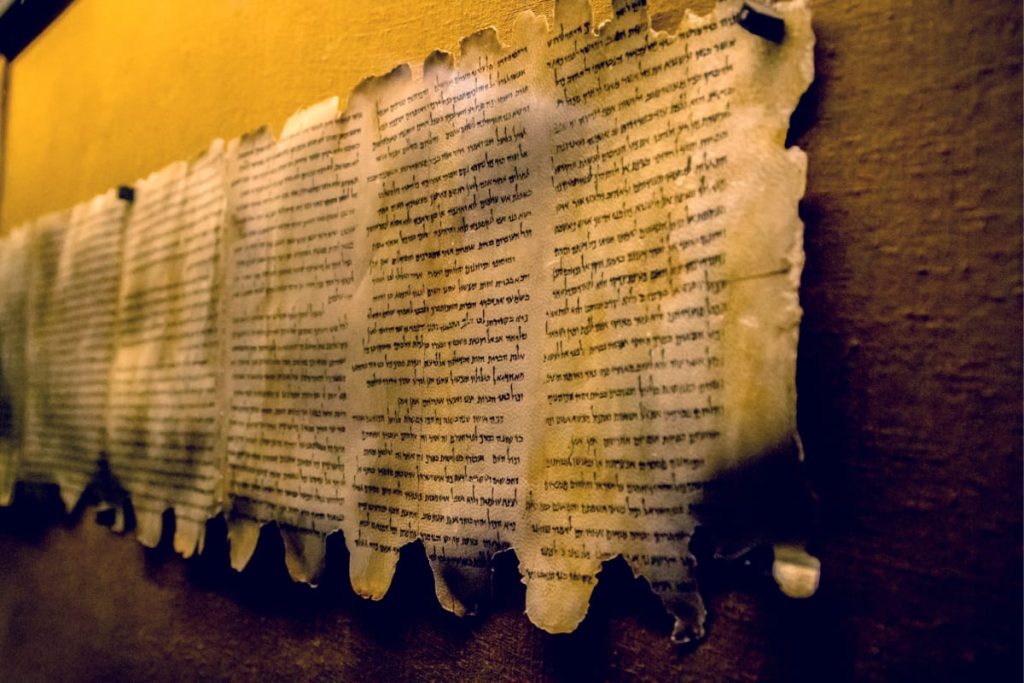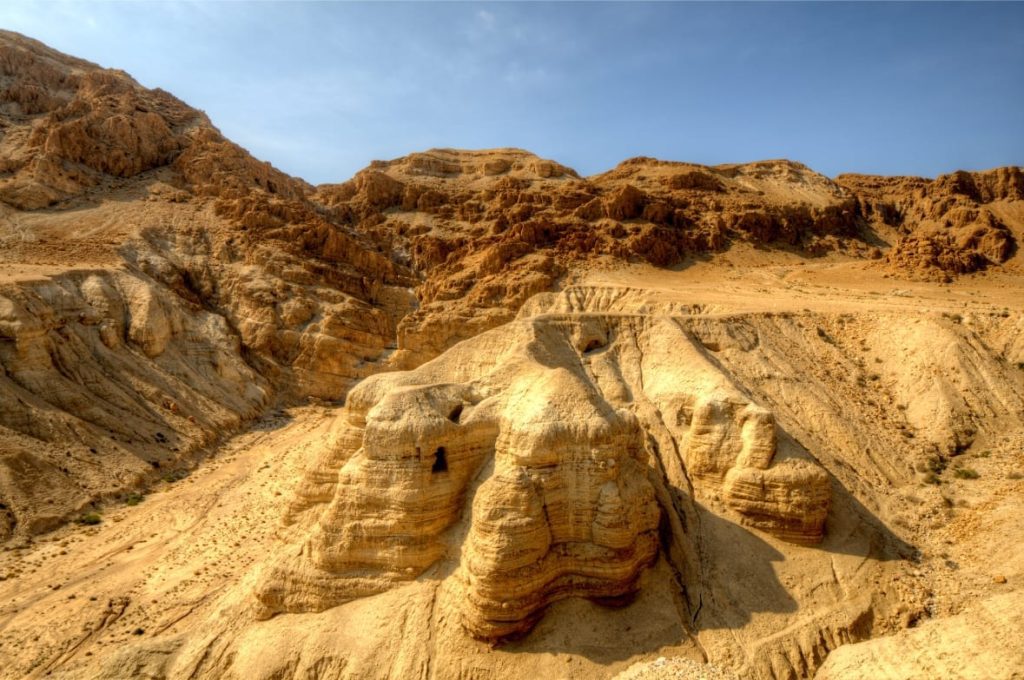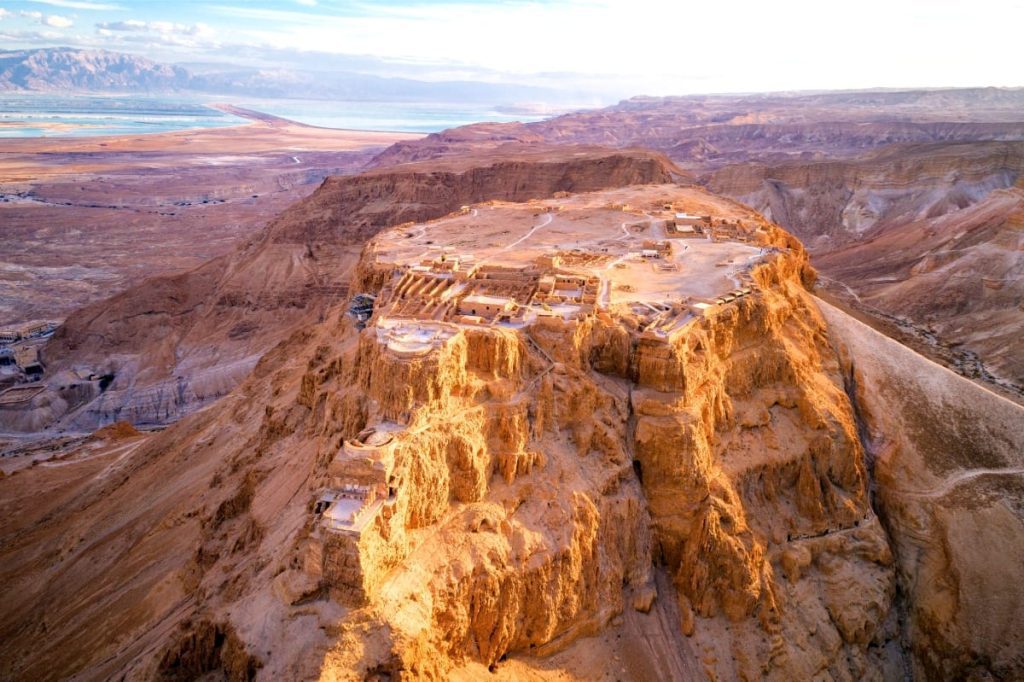Qumran National Park
We will begin our Masada Tour with what is best known as the settlement nearest to the Qumran Caves where the Dead Sea Scrolls were hidden; caves in the sheer desert cliffs and beneath, in the marl terrace. The principal excavations at Qumran were conducted by Roland de Vaux in the 1950s; though several later unearthings at the site have been carried out.

THE DEAD SEA SCROLLS
Many scholars believe the location was home to a Hebrew sect, probably the Essenes. But, according to Lawrence Schiffman, the rules of the community, its heavy stress on priesthood and the Zadokite legacy, and other details indicate a Sadducean oriented sect.
So the scrolls were found in a series of eleven caves around the settlement, some accessible only through the settlement. Some scholars have claimed that the caves were the permanent libraries of the sect; due to the presence of the remains of a shelving system. Some scholars believe that some of these texts describe the beliefs of the inhabitants of Qumran; who may have been Essenes. Most of the scrolls seem to have been hidden in the caves during the turmoil of the First Jewish-Roman War (66-73 CE); although some of them may have been deposited later.
Masada National Park
The highlight of our Masada Tour is of course Masada National Park. As you know Masada is an ancient fortification in the Judean Desert, situated on top of an isolated rock plateau, akin to a mesa. Herod the Great built two palaces for himself on the mountain and fortified Masada between 37 and 31 BCE. According to Josephus, the siege of Masada by Roman troops from 73 or 74 CE, ended in the mass suicide of the 960 Sicarii rebels who were hiding there.
On our private tour of Masada we would focus on the northern complex; exploring the storerooms where Herod stores the precious wine from Italy; the Roman baths; the northern palace; the fortifications of Masada; the ancient synagogue and even a Byzantine monastery that was built on top of the mountain.
A Rejuvenating Dip in the Dead Sea
Aristotle wrote about the remarkable waters of the Dead Sea. The Nabateans and others discovered the value of the globs of natural asphalt that constantly floated to the surface where they could be harvested with nets. The Egyptians were steady customers; as they used asphalt in the embalming process that created mummies. The Ancient Romans knew the Dead Sea as “Palus Asphaltites” (Asphalt Lake).




